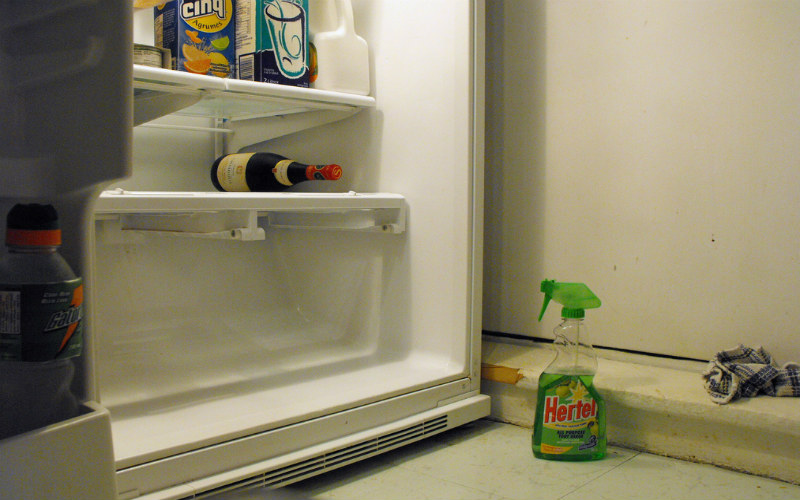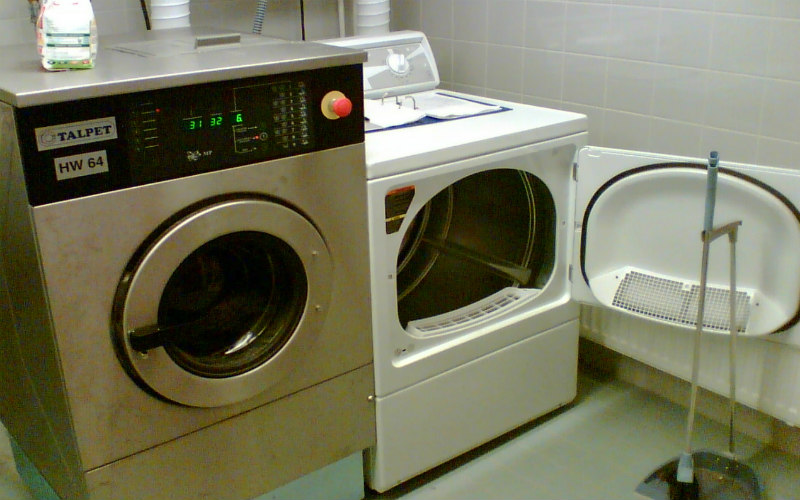
Used on a regular basis in most households, it’s important to ensure that whitegoods, including washing machines, refrigerators and dryers, are prepared correctly before being placed into storage. Providing the perfect environment for unwanted guests such as mould mildew to thrive, spending some extra time to make sure that your appliances are in top shape before your move can leave you with less stress in the long run.
Discover how to prepare your whitegoods with our handy storage guide!
Refrigerators
Defrost and clean your fridge
After removing everything from your refrigerator, be sure to defrost your fridge completely. Once the appliance has defrosted, clean it as thoroughly as possible to reduce the chances of mould growing and insects and other pests being drawn to your storage unit.
 Cleaning your fridge helps to reduce the likelihood of mould growth. Image Credit: Morgan.
Cleaning your fridge helps to reduce the likelihood of mould growth. Image Credit: Morgan.
Allow your fridge to dry out
Leave the doors of your refrigerator open for a few days after defrosting and cleaning to allow any remaining moisture to dry out. Ensuring that the fridge’s insides are no longer damp can reduce the risk of having to contend with mould and mildew spreading throughout your storage unit.
Leave your fridge doors ajar
While most of the moisture may have already been removed from your refrigerator, once you have moved it into your storage space, it’s a good idea to keep its doors ajar to keep air circulating.
Place a deodoriser or moisture absorber inside your refrigerator
Leaving a deodoriser or a moisture absorber (such as an open box of bicarb soda) in your fridge can leave your appliance smelling great while also helping to prevent the growth of mould and mildew.
Keep your refrigerator standing upright
As well as maximising the floorspace of your storage unit, keeping your refrigerator standing upright can also prevent mechanical issues that may impact how well your appliance works. Laying your refrigerator on its side can lead to some problems down the line including the oil compressor leaking into its cooling lines, making it unable to cool properly.
Washing Machines
Clean your washing machine thoroughly
After using your washing machine for the last time before you’re set to move it into storage, wipe away any detergent, fabric softener or other residue that may remain inside.
Drain your washing machine
Ensuring that all water is removed from your washing machine’s central drum and water hoses reduces the likelihood of mould, mildew and rust thriving both in your machine and in your storage unit. Each washing machine is different, so be sure to consult your manufacturer’s guide for the best way to do this.
 Cleaning and drying your washing machine thoroughly can help prevent problems in the future. Image Credit: Pablo Ibanez.
Cleaning and drying your washing machine thoroughly can help prevent problems in the future. Image Credit: Pablo Ibanez.
Ensure your washing machine is dry
Before placing your machine in storage, leave its lid or door open for a few days to allow it to fully dry out. Drying your machine before storing it also reduces the risk of mould, mildew and rust taking hold.
Keep the door slightly ajar
As with refrigerators, it’s a good idea to keep your washing machine’s lid or door slightly ajar whilst in storage. Doing so allows for air to circulate, preventing any remaining water from causing damage inside.
Dryers
Clean your dryer after its final use
Following the last use of your dryer, clean its filter and wipe away any lint that may remain inside. Doing so will reduce the amount of cleaning you’ll need to do after taking the dryer out of storage and help to reduce the chances that your appliance will attract insects.
Allow your dryer to dry out
After cleaning your dryer, leave its door open for a couple of days to allow the appliance to completely dry out. Ensuring your dryer is dry internally helps to reduce the chances that mould will begin to grow within the appliance.
 It’s important to allow your clother dryer to dry completely before being put in storage. Image Credit: JONN_
It’s important to allow your clother dryer to dry completely before being put in storage. Image Credit: JONN_
Leave the door open
Once your dryer has been moved into your storage space, open its door slightly to allow air to circulate through the appliance. As with other white goods, this lowers the risk of mould and mildew growth.

